Apps
Auto Added by WPeMatico
Auto Added by WPeMatico
Between Dropbox, Google Drive, Microsoft OneDrive and iCloud Drive, consumer cloud storage is a crowded space. And yet, a small company called pCloud has managed to attract more than 9 million users over the past five years. The company recently reached profitability with a team of 32 people.
If you’re familiar with Dropbox, pCloud won’t surprise you. The service lets you back up and sync files across your devices. You get 10GB for free and you can pay for more storage and features.
Unlike Dropbox or OneDrive, pCloud acts more like an external hard drive. When you install the app on your computer, everything stays in the cloud by default. On macOS, the company uses Fuse to create a new virtual hard drive in the Finder.
If you right-click on a folder, you can choose to download it on your computer for offline access. It creates a new folder on your local hard drive that remains in sync with your pCloud account. Similarly, you can add existing folders to pCloud from the settings panel. These folders will remain permanently in sync as long as you keep the app running on your computer.
In addition, pCloud supports LAN syncing, which means that if you have multiple devices on the same Wi-Fi network, they’ll transfer files using your local network instead of the internet. Dropbox also has this feature.
On mobile, you can access your files using the mobile app. Like many competitors, pCloud also lets you automatically back up your camera roll to your pCloud account.
Now let’s talk about security. Just like other cloud storage services, pCloud doesn’t encrypt your files by default — pCloud uses encryption on files while they’re in transit though. When you sync a file using pCloud, the company can theoretically retrieve that file. If you’re serious about privacy, you shouldn’t use cloud storage services at all.
But pCloud also offers an optional add-on called pCloud Crypto. This feature lets you create a secret folder that you can unlock with a password. When you add a file to this folder, it is encrypted on your device and then sent to pCloud’s server. If you don’t have that password, you can’t unlock the file. It means that pCloud and authorities can’t retrieve those files without you.
When it comes to pricing, pCloud costs $3.99 per month for 500GB of storage and $7.99 per month for 2TB of storage; pCloud Crypto costs an additional $4.99 per month. You also can buy lifetime subscriptions for $175 for 500GB, $350 for 2TB and $125 for Crypto. This is expensive, but it could convince some users who are not into subscriptions.
Even though it seems incredibly complicated to compete with Microsoft, Google, Apple and Dropbox, I’m glad to see that it’s still possible to build an alternative product with some differentiating features. Although pCloud will probably never be as big as Dropbox, it is an interesting company to follow.
Powered by WPeMatico
Every engineer deserves a clear growth path so they can understand, plan, and execute on meaningful career growth. Providing a framework for this growth (we call ours a competency matrix; it’s also known as a career ladder, or professional development ladder) is important work, and the responsibility of any organization that wants to nurture and grow its employees.
Back at the beginning of 2018, we had 32 developers and a plan to double throughout the year, we already had a competency matrix, but it was woefully outdated. It focused on our more junior levels, maxing out at a level which some developers had already reached. It was also misaligned with the skills our organization had grown to value, which meant in practice, we often ignored it. It was time for a re-design.
Building a new competency matrix was a learning process, and a lengthy one, taking about eight months to complete. Along the way we discovered things we valued, as well as what the keys steps to building a career ladder are (and which ones are wasteful). While every matrix is different, and will reflect the values of the organization that wrote it, the process of producing a succinct career ladder to guide your team is consistent.
When we published our new Engineering competency matrix in December, we received many emails from teams saying they were working on similar systems. Because of this feedback, I want to share the steps we went through, and the lessons we learned, to help teams reach a productive conclusion with much less waste, and in much shorter time, than trying to figure it out from scratch.
If you want to provide your employees and reports with a clear, agreed-upon and well-defined path for growth within your organization, then this is for you.

Image via CircleCI
In retrospect, this was the biggest factor in our lengthy redesign process. I had initially taken on this project as one of my many side projects. The only time I had to dedicate to the matrix were early mornings, late nights, and weekends. This was a passion project for me, and I loved working on it, but I was not able to give it the care it needed.
Powered by WPeMatico
According to a report from 9to5mac’s Guilherme Rambo, the next major version of iOS for the iPhone and iPad will present many new features, such as universal dark mode, new gestures, visual changes for the volume popup and more.
Dark mode should work more or less like dark mode on macOS Mojave. You’ll be able to turn on a system-wide option in Settings. Apps that support it will automatically switch to dark mode the next time you launch them. Let’s hope that third-party developers will support that feature. Otherwise, it would be a bit useless if Facebook, Instagram, Gmail or Amazon still feature blindingly white backgrounds.
The other big change is that you’ll be able to open multiple windows of the same app on the iPad. You can already open two Safari tabs side by side, but it sounds like Apple plans to expand that feature beyond Safari with a card metaphor. Each window will be represented as a card that you can move, stack or dismiss.
Other iOS 13 features sound like minor improvements that should make iOS less frustrating. And it starts with new gestures. Instead of shaking your device to undo an action, users will be able to swipe with three fingers on the virtual keyboard to undo and redo a text insertion.
Similarly, Apple could be working on a new way to select multiple items in a table view or grid view. You could just drag a rectangle around multiple items to select them. Once again, Apple is reusing a classic macOS feature on iOS.
Some apps will receive updates, such as Mail and Reminders. The default email client will sort your emails in multiple categories (marketing, travel, etc.) just like in Gmail.
Finally, that annoying volume popup could be on the way out. Apple could replace that popup with a more subtle volume indicator.
Overall, the most exciting change is probably the ability to launch multiple windows of the same app. It’ll be interesting to see how Apple plans to implement that feature and what you’ll be able to do with that. Moving away from the traditional “one app = one document” metaphor could open up a lot of different workflows.
Powered by WPeMatico
Feed and Stories unite! Facebook is so eager to preempt the shift to Stories that it might even let us use the same interface of horizontally swipeable cards to sift through News Feed posts. If users won’t scroll down any more, Facebook’s ad business could take a huge hit. But by allowing traditional feed posts and ads to appear amidst Stories in the same carousel you’re more prone to swipe through, it could squeeze more views and dollars out of that content. This would help Facebook gracefully transition to the post-News Feed era while it teaches advertisers how to use the full-screen Stories ad format.
In this image, you can see a user in mid-swipe through the hybrid carousel between a News Feed story about a friend updating their profile photo to an animated GIF-style video on the left and a Stories video on the right.
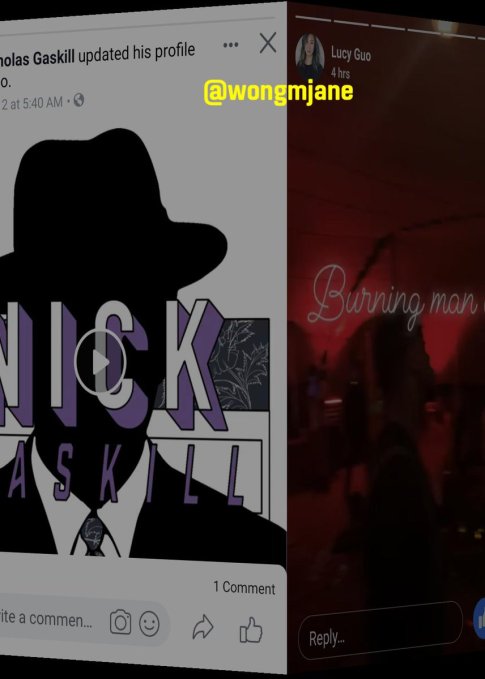
We’re awaiting comment from Facebook about this. There’s a chance it was just caused by a bug like the briefly side-scrollable Instagram feed that popped up in December, or that it will never be publicly tested, let alone launch. But given the significance of Facebook potentially reimagining navigation of its main revenue stream, we considered it worth covering immediately. After all, Facebook predicts that Stories sharing will surpass feed sharing across all social apps sometime this year. It already has 300 million daily users across Stories on Facebook and Messenger, plus another 500 million on Instagram Stories and 450 million on WhatsApp Status.
[Update: Facebook confirms that this feature is a very early-stage prototype of a new way to navigate News Feed posts. A Facebook spokesperson tells TechCrunch that “We are currently not testing this publicly” as the company still needs do a lot more user research before any public experimentation.]
This swipeable hybrid carousel was first spotted by reverse-engineering specialist and frequent TechCrunch tipster Jane Manchun Wong. She discovered this unreleased feature inside the Android version of Facebook and screenrecorded the new navigation method. In this prototype, when a News Feed post’s header or surrounding space is tapped, users see a full-screen version of the post. From there they can swipe left to reveal the next content in the hybrid carousel, which can include both traditional News Feed posts, News Feed ads and purposefully vertical Stories and Stories ads.
Users can tap to Like, react to or comment on feed posts while still in the carousel interface. Facebook has been offering ways to syndicate your News Feed posts to Stories since last year, but those posts got reformatted to look like Stories rather than retaining their old design and white background as we see here.
Facebook is testing to turn News Feed into Story Feed pic.twitter.com/83H7VWcgmD
— Jane Manchun Wong (@wongmjane) April 15, 2019
If Facebook moved forward with offering this as an optional way to browse its social network, it would hedge the business against the biggest behavior change it’s seen since the move from desktop to mobile. Vertically scrolling News Feeds are useful for browsing text-heavy content, but the navigation requires more work. Users have to stop and start scrolling precisely to get a whole post in view, and it takes longer to move between pieces of content.
In contrast, swipeable Stories carousels offer a more convenient lean-back navigation style where posts always appear fully visible. All it takes to advance to the next full-screen piece of content is a single tap, which is easier on your joints. This allows rapid-fire fast-forwarding through friends’ lives, which works well with more visual, instantly digestible content. While cramming text-filled News Feed posts may not be ideal, at least they might get more attention. If Facebook combined all this with unskippable Stories ads like Snapchat is increasingly using, the medium shift could lure more TV dollars to the web.
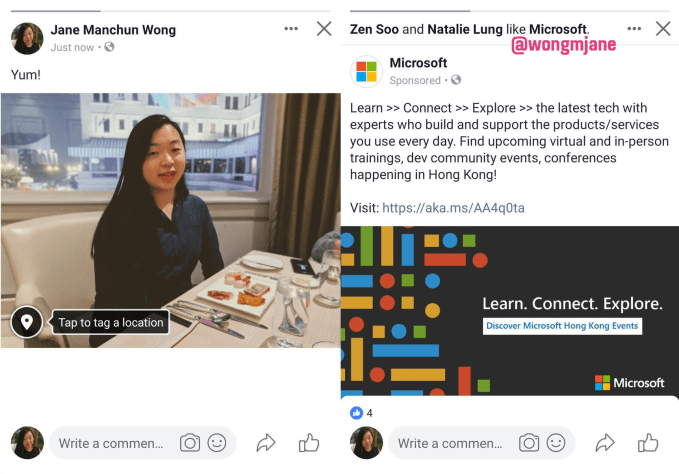
The hybrid posts and Stories carousel can contain both traditional image plus caption News Feed posts and News feed ads as well as Stories
Facebook has repeatedly warned that it’s out of space for more ads in the News Feed, and that users are moving their viewing time to Stories, where advertisers are still getting acclimated. When Facebook made it clear on its Q2 2018 earnings call that this could significantly reduce revenue growth, its share price dropped 20 percent, vaporizing $120 billion in value. Wall Street is rightfully concerned that the Stories medium shift could upend Facebook’s massive business.
Stories is a bustling up-and-coming neighborhood. News Feed is a steadily declining industrial city that’s where Facebook’s money is earned but that’s on its way to becoming a ghost town. A hybrid Stories/posts carousel would build a super highway between them, connecting where Facebook users want to spend time with where the municipality generates the taxes necessary to keep the lights on.
Powered by WPeMatico
This week’s banishment of host Scott Rogowsky was merely a symptom of the ongoing struggle to decide who will lead HQ Trivia. According to multiple sources, over half of the startup’s staff signed an internal petition to depose CEO Rus Yusupov who they saw as mismanaging the company. But Yusupov then fired three core supporters of the mutiny, leading to a downward spiral of morale that mirrors HQ’s plummeting App Store rank.
TechCrunch spoke to multiple sources familiar with HQ Trivia’s internal troubles to piece together how the live video mobile game went from blockbuster to nearly bust. Two sources said HQ recently only had around $6 million in the bank but was burning over $1 million per month, meaning its runway could be dwindling. But its early investors are reluctant to hand Yusupov any more cash. “

Employees petitioned to remove HQ Trivia’s CEO Rus Yusupov
HQ reimagined gaming and mobile entertainment with the launch of its 12-question trivia game in August 2017 where players all competed live in twice-daily shows with anyone who got all the answers right split a cash jackpot. The games felt urgent since you could only participate at designated times, fun to play against friends or strangers, and winning carried a significance no single-player or non-stop online game could match.
When TechCrunch wrote the first coverage of HQ Trivia in October 2017, it had just 3500 concurrent players. But by January it had climbed to the #3 game and #6 overall app in the App Store, and grown to 2.38 million players by March. Quickly, copycats from China and Facebook entered the market. But they all lacked HQ’s secret weapon — its plucky host comedian Scott Rogowsky. Affectionately awarded nicknames like Quiz Daddy, Quiz Khalifa, Host Malone, and Trap Trebek from the “HQties” who played daily, he was the de facto face of the startup.
Yet HQ had some shaky foundations. Co-founder Colin Kroll, who’d also started Vine with Yusupov and sold it to Twitter, had been fired from Twitter after 18 months for being a bad manager, Recode reported. He’d also picked up a reputation of being creepy around female employees, as well as Vine stars, TechCrunch has learned. Rapid growth and an investigation by early HQ investor Jeremy Liew that found no egregious misconduct by Kroll paved the way for a $15 million investment. The round was led by Founders Fund’s Cyan Bannister, and it valued HQ at over $100 million.
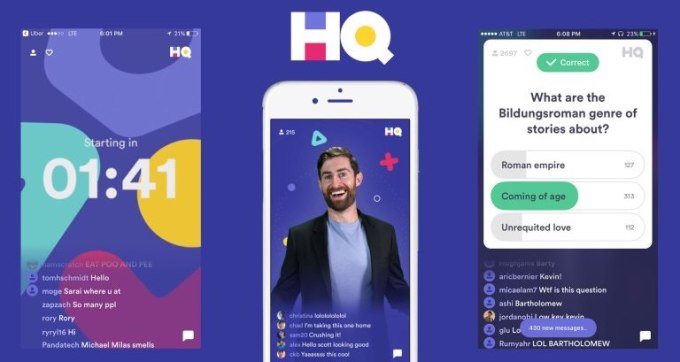
Yusupov failed to translate that cash into sustained growth and product innovation. His public behavior had already raised flags. He yelled at a Daily Beast reporter after the outlet’s Taylor Lorenz interviewed Rogowsky without Yusupov’s approval, threatening to fire the host. “You’re putting Scott’s job in jeopardy. Is that what you want? . . . Please read me your story word for word,” Yusupov said. When he learned Rogowsky had expressed his preference for salad restaurant chain Sweetgreen, Yusupov shouted “He cannot say that! We do not have a brand deal with Sweetgreen! Under no circumstances can he say that.” The next day, Yusupov falsely claimed he’d never threatened Rogowsky’s job.
With HQ’s bank account full, sources say Yusupov was extremely slow to make decisions, allowing HQ to stagnate. The novelty of playing trivia for money via phone has begun to wear off, and people increasingly ignored HQ’s push notifications to join its next game. But beyond bringing in some guest hosts and the option to buy a second chance after a wrong answer, HQ ceased to evolve. HQ fell to the #196 game on iOS and the #585 overall app as concurrent players waned.

That’s when things started to get a bit Game Of Thrones.
Liew pushed for HQ to swap Kroll into the CEO spot in September 2018 while moving Yusupov to Chief Creative Officer, which was confirmed despite an HR complaint against Kroll for aggressive management. However, three sources tell TechCrunch that Yusupov pushed that HQ employee to file the complaint against Kroll. As the WSJ reported after Kroll’s death, that employee later left the startup because they felt that they’d been exploited. “There was definitely what felt like manipulation there, and that’s also why that employee resigned from the company.” one source said. Another source said that staffer “believed Rus used their unhappiness about work to use them as a pawn in his CEO war and not because Rus actually cared about resolving things.”
Cyan of Founders Fund stepped down from HQ’s board after the decision to swap out Yusupov due to her firm’s reputation of keeping founders in control, Recode’s Kurt Wagner reported. Sources say that despite Kroll’s reputation, the staff believed in him. “Colin loved HQ and was dedicated to all the employees more than Rus. Rus cares about Rus. Colin cared about the content” a source tells me.

Three sources say that in a desperate ploy to retain power and prevent Kroll’s rise, Yusupov suggested Rogowsky, a comedian with no tech or management experience, be made CEO of HQ Trivia. He even suggested the company film a reality show about Rogowsky taking over. That idea was quickly shot down as preposterous.
“It was a very personal desperation tactic not to have Colin be CEO. It was not a professionally thought-out idea” a source tells me, though another said it was always hard to tell if Yusupov’s crazy ideas were jokes. Both Yusupov and HQ Trivia declined to respond to multiple requests for comment, but we’ll update if we hear back.

HQ Trivia co-founder Colin Kroll passed away in December
Then tragedy struck in December. Kroll, then CEO, was found dead in his apartment from a drug overdose. Employees were distraught over what would happen next. “Colin’s plan was to ship fast, and get new things out there” a source says, noting that Kroll had pushed for the release of HQ’s first new game type HQ Words modeled after Wheel Of Fortune. “He wasn’t perfect but in the time he was in charge, the ship started to turn, but when Rus took over again it was like the 9 months where we did nothing.”
By February 2019, HQ’s staff was fed up. Two sources confirm that 20 of the roughly 35 employees signed a letter asking the board to remove Yusupov and establish a new CEO. With HQ’s download rate continuing to sink, they feared he’d run the startup into the ground. One source suggested Yusupov might rather have seen the whole startup come crashing down with the blame placed on the product than have it come to light that he played a large hand in the fall. The tone of the letter, which was never formally delivered but sources believe the board knew of, wasn’t accusatory but a plea for transparency about the company’s future and the staff’s job security.
At a hastily convened all-hands meeting in late February, HQ investor Liew told the company his fund Lightspeed would support a search for a new CEO to replace Yusupov, and provide that new CEO with funding for 18 more months of runway. Liew told the staff he would step down from the board once that CEO was found, but the search continues and so Liew remains on HQ’s board.
“Mostly everyone was on Jeremy’s side as no one wanted to work under Rus. Jeremy wasn’t trying to screw him over the way Rus would screw other people over. He just wanted to do what was right, getting behind what everyone wanted” a source said of Liew.
Instead, HQ’s board moved forward with instituting a new executive decision-making committee composed of Yusupov, HQ’s head of production Nick Gallo, and VP of engineering Ben Sheats. Yusupov would remain interim CEO, and he continued to cling to power and there’s been little transparency about the CEO replacement process. Until a new CEO is found, HQ must subsist on its existing funds. The staff is “always worried about running out of runway” and are given vague answers when they ask leadership about how much money is left.
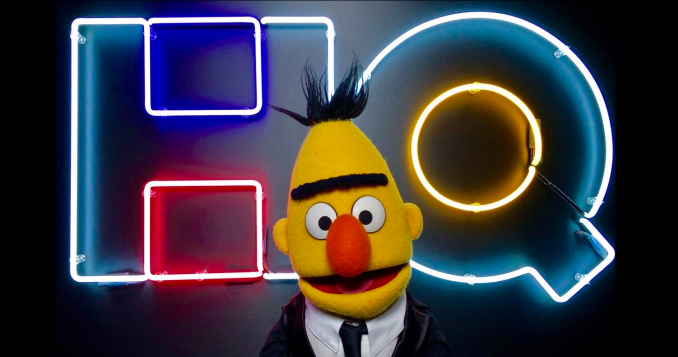
On March 1st, the committee emerged from a meeting and fired three employees who had spearheaded the petition and been vocal about Yusupov’s failings.
One who wasn’t fired was Rogowsky, despite sources saying at one point he’d tried to organize the staff to go on strike. Other employees had been cautious about standing up to Yusupov. “Everyone was terrified of retaliation. Their fears have totally been validated” a source explains. Engineers and other staffers with strong employment prospects began to drain out of the company. Those left were just trying to hold onto their jobs. Without inspiring leadership or a strategy to reverse user shrinkage, recruiting replacements would prove difficult.
Yusupov remains on the board, along with Tinder CEO Elie Seidman who Yusupov appointed to his additional common seat. Liew retains his seat until the new CEO is found and given that seat. And Kroll’s seat appears to have gone to Lightspeed partner Merci Victoria Grace. Lightspeed and Cyan of Founders Fund declined to respond to requests for comment.
Tensions at HQ and a desire to diversify his prospects led Rogowsky to pick up a side gig hosting baseball talk show ChangeUp on the DAZN network, TMZ reported this week. He’d hoped to continue hosting HQ during its big weekend contests. But tensions with Yusupov and the CEO’s desire for the host to remain exclusively at HQ led negotiations to sour causing Rogowsky to leave the startup entirely. TechCrunch was first to report that he’s been replaced by former HQ guest host Matt Richards, who Yusupov bluntly told me Friday had polled higher than Rogowsky in a SurveyMonkey survey of HQ’s top players.

In tweets, Rogowsky revealed that that “Sadly, it won’t be possible for me to continue hosting HQ concurrently as I had hoped” noting, “I wasn’t given the courtesy of a farewell show.” Finding a way to preserve Rogowsky’s ties to HQ likely would have been best for the startup. TechCrunch had raised the concern a year ago that unless Rogowsky was properly locked in with an adequate equity vesting schedule at HQ, he could leave. Or worse, he could be poached by Facebook, Snapchat, or YouTube to host an HQ competitor.
“Rus is a visionary but not a good leader. He is extremely manipulative in an unproductive way. He’s a dude who just cares a lot about his reputation” a source noted. “A lot of the negative sentiment amongst staff is the belief that he cares more about his reputation than the company itself.”
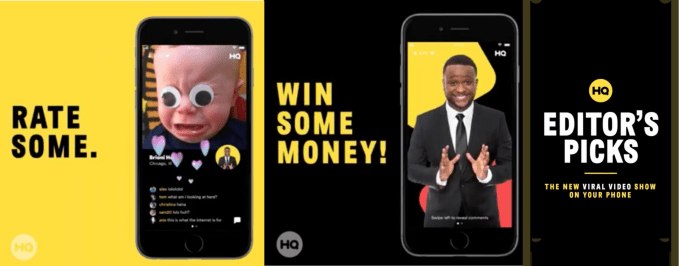
HQ’s next attempt to revive growth appears to be HQ Editor’s Picks, is described as “a new live show on your phone where our host shows funny viral videos and you decide on who gets paid.” Finally it seems willing to embrace the potential of interactive live video entertainment outside of trivia and puzzles. HQ Editor’s Picks will face an uphill battle, since HQ dropped out of the top 1500 iOS apps last month, according to App Annie. Sensor Tower estimates that HQ saw just 8 percent as many downloads in March 2019 as March 2018.
After the loss of its spirit animal Rogowsky, the employees’ chosen leader Kroll, the supervision of veteran investor Cyan, and its product momentum, tough questions are what remain for HQ Trivia. The company’s struggles have paralyzed its progress towards finding a new viral mechanic or game format that attracts users. While HQ Words is fun, it’s too similar to its trivia competition to change the startup’s trajectory. And all of the in-fighting could scare off any talent hoping to turn HQ around. Unfortunately, securing an extra life for the game will take a more than a $3.99 in-app purchase.

Powered by WPeMatico
What is Niantic? If they recognize the name, most people would rightly tell you it’s a company that makes mobile games, like Pokémon GO, or Ingress, or Harry Potter: Wizards Unite.
But no one at Niantic really seems to box it up as a mobile gaming company. Making these games is a big part of what the company does, yes, but the games are part of a bigger picture: they are a springboard, a place to figure out the constraints of what they can do with augmented reality today, and to figure out how to build the tech that moves it forward. Niantic wants to wrap their learnings back into a platform upon which others can build their own AR products, be it games or something else. And they want to be ready for whatever comes after smartphones.
Niantic is a bet on augmented reality becoming more and more a part of our lives; when that happens, they want to be the company that powers it.
This is Part 3 of our EC-1 series on Niantic, looking at its past, present, and potential future. You can find Part 1 here and Part 2 here. The reading time for this article is 24 minutes (6,050 words)
After the absurd launch of Pokémon GO, everyone wanted a piece of the AR pie. Niantic got more pitches than they could take on, I’m told, as rights holders big and small reached out to see if the company might build something with their IP or franchise.
But Niantic couldn’t build it all. From art, to audio, to even just thinking up new gameplay mechanics, each game or project they took on would require a mountain of resources. What if they focused on letting these other companies build these sorts of things themselves?
That’s the idea behind Niantic’s Real World Platform. This platform is a key part of Niantic’s game plan moving forward, with the company having as many people working on the platform as it has on its marquee money maker, Pokémon GO.
There are tons of pieces that go into making things like GO or Ingress, and Niantic has spent the better part of the last decade figuring out how to make them all fit together. They’ve built the core engine that powers the games and, after a bumpy start with Pokémon GO’s launch, figured out how to scale it to hundreds of millions of users around the world. They’ve put considerable work into figuring out how to detect cheaters and spoofers and give them the boot. They’ve built a social layer, with systems like friendships and trade. They’ve already amassed that real-world location data that proved so challenging back when it was building Field Trip, with all of those real-world points of interest that now serve as portals and Pokéstops.
Niantic could help other companies with real-world events, too. That might seem funny after the mess that was the first Pokémon GO Fest (as detailed in Part II). But Niantic turned around, went back to the same city the next year, and pulled it off. That experience — that battle-testing — is valuable. Meanwhile, the company has pulled off countless huge Ingress events, and a number of Pokémon GO side events called “Safari Zones.” CTO Phil Keslin confirmed to me that event management is planned as part of the platform offering.
As Niantic builds new tech — like, say, more advanced AR or faster ways to sync AR experiences between devices — it’ll all get rolled into the platform. With each problem they solve, the platform offering would grow.
But first they need to prove that there’s a platform to stand on.
Niantic’s platform, as it exists today, is the result of years of building their own games. It’s the collection of tools they’ve built and rebuilt along the way, and that already powers Ingress Prime and Pokémon GO. But to prove itself as a platform company, Niantic needs to show that they can do it again. That they can take these engines, these tools, and, working with another team, use them for something new.
Powered by WPeMatico
Quiz Khalifa aka Host Malone aka Trap Trebek aka HQ Trivia’s Scott Rogowsky has been pushed out of the live mobile gaming startup. The two split due to disagreements about Rogowsky attempting to take a second full-time job hosting sports streaming service DAZN’s baseball show ChangeUp while moving to only hosting HQ on weekends, TMZ first reported. HQ wanted someone committed to their show.
Now HQ co-founder and CEO Rus Yusupov confirms to TechCrunch that Rogowsky will no longer host HQ Trivia. He tells me that the company ran a SurveyMonkey survey of its top players and they voted that former guest host Matt Richards rated higher than Rogowsky. Yusupov says HQ is excited to have Richards as its new prime time host. It’s also putting out offers to more celebrity guests to host for a few shows, a few weeks or even a whole season of one of its time slots.

HQ Trivia’s new host Matt Richards
The departure could still shake HQ’s brand since Rogowsky had become the de facto face of the company. But he was also prone to talking a lot on the air and promoting himself, sometimes in ways that felt distracting from the game. Rogowsky has also been using HQ’s brand to further his stand-up comedy career, splashing its logo on advertising for his shows like this one below at a casino where “The centerpiece is a live trivia competition,” he told WPTV5.
[Update: Rogowsky has since commented on his departure via tweetstorm. He thanked the team and viewers for their support but didn’t mention the startup’s founders, confirmed his ChangeUp gig led to leaving HQ, and threw a dig at the company noting “I wasn’t given the courtesy of a farewell show.”]
Sadly, it won’t be possible for me to continue hosting HQ concurrently as I had hoped, and because I wasn’t given the courtesy of a farewell show, please allow me to use this thread to say all the things I would have said on my final broadcast. (2/5)
— Scott Rogowsky (@ScottRogowsky) April 12, 2019
Rogowsky also issued TechCrunch this statement:
“Nothing in my decade-plus entertainment career has meant more to me personally and professionally than my involvement with HQ. I am tremendously grateful to the talented team of engineers, writers, animators and producers at Intermedia Labs who helped me grow the show into the international phenomenon it became, and above all, I will forever be thankful for the millions of HQties around the world who will always hold a special place in my heart. While the decision to leave HQ was a difficult one, I am delighted to begin this next chapter in my career with the amazing people at MLB and DAZN. If you miss me on HQ, you can now get three hours of me every weeknight watching ChangeUp on DAZN.”
TechCrunch had predicted that Rogowsky might depart if he wasn’t properly compensated with equity in HQ Trivia that would only vest and earn him money if he stuck around. The damage to HQ could worsen if he’s scooped up by Facebook, Snapchat or another tech company to build out their own live video gaming shows.

Rogowsky used HQ Trivia branding to promote his own in-person comedy and trivia shows
HQ Trivia provided this statement on Rogowsky’s exit:
We continue to build an incredible company at HQ Trivia, from drawing hundreds of thousands of players to the platform daily, to increasing the size of the prize, to attracting strong talent. We’ve come a long way since Scott Rogowsky’s first trivia game and we’re grateful for everything he’s done for the platform. This is a team that creates products for talent to really shine—we’re just getting started at HQ Trivia, and as he makes his next move, wanted to take a minute to thank him for being part of our journey.
Yusupov tells me he’s excited about exploring new hosts, noting that Richards is a person of color who brings more diversity to HQ’s lineup. Richards is a stand-up comic who has appeared on CBS’ 2 Broke Girls, Nickelodeon’s School of Rock and was a voice-over host for game show Trivial Takedown on FUSE. Yusupov says the team feels jazzed about the new creative opportunities beyond Rogowsky, though the CEO says he appreciates all that its former host contributed.
Richards will have the tall task of trying to revive HQ’s popularity. It climbed the app store charts to become the No. 3 top game and No. 6 overall app in January 2018, and peaked at 2.38 million concurrent players in March 2018. But it’s been on a steady decline since, falling to the No. 585 overall app in August, and it dropped out of the top 1,500 last month, according to App Annie. HQ Trivia was installed more than 160,000 times last month on iOS and Android, with approximately $200,000 in in-app purchase revenue, according to Sensor Tower. But that’s just 8 percent as many downloads as the 1.97 million new installs HQ got in March 2018.
Exhaustion with the game format, so many winners splitting jackpots to just a few dollars per victor and laggy streams have all driven away players. The introduction of a new Wheel of Fortune-style HQ Words game in August hasn’t stopped the decline. And the tragic death of HQ co-founder and former CEO Colin Kroll may have impeded efforts to turn things around. There’s a ton of pressure on the company after it raised $23 million, including a $15 million round at a $100 million valuation.
Even if HQ Trivia fades from the zeitgeist, it and Rogowsky will have inspired a new wave of innovation in what it means to play with our phones.
Powered by WPeMatico
Several enterprise virtual private networking apps are vulnerable to a security bug that can allow an attacker to remotely break into a company’s internal network, according to a warning issued by Homeland Security’s cybersecurity division.
An alert was published Friday by the government’s Cybersecurity and Infrastructure Security Agency following a public disclosure by CERT/CC, the vulnerability disclosure center at Carnegie Mellon University.
The VPN apps built by four vendors — Cisco, Palo Alto Networks, Pulse Secure and F5 Networks — improperly store authentication tokens and session cookies on a user’s computer. These aren’t your traditional consumer VPN apps used to protect your privacy, but enterprise VPN apps that are typically rolled out by a company’s IT staff to allow remote workers to access resources on a company’s network.
The apps generate tokens from a user’s password and are stored on their computer to keep the user logged in without having to reenter their password every time. But if stolen, these tokens can allow access to that user’s account without needing their password.
But with access to a user’s computer — such as through malware — an attacker could steal those tokens and use them to gain access to a company’s network with the same level of access as the user. That includes company apps, systems and data.
So far, only Palo Alto Networks has confirmed its GlobalProtect app was vulnerable. The company issued a patch for both its Windows and Mac clients.
Neither Cisco nor Pulse Secure have patched their apps. F5 Networks is said to have known about storing since at least 2013 but advised users to roll out two-factor authentication instead of releasing a patch.
CERT warned that hundreds of other apps could be affected — but more testing was required.
Powered by WPeMatico
Apple has added another step to prevent users from accidentally signing up for an iOS app’s subscription — or, from being tricked into it by a scammy app not playing by the rules. The company recently rolled out a subscription confirmation dialog box that pops up as one final step to ensure you meant to opt in to the subscription being offered.
The change to iOS was first spotted by app developer David Barnard on Twitter and reported by Apple news site 9to5Mac.
Whoa! Apple added an additional confirmation step for subscriptions. This new alert comes after you confirm with Touch ID/Face ID. I hope they address this in a more elegant way in iOS 13, but I’m thrilled Apple took a definitive step to curb scam subscriptions.
@pschiller pic.twitter.com/oktaEVdx0o
— David Barnard (@drbarnard) April 11, 2019
The new confirmation box is a welcome addition, considering how many users were accidentally subscribing — particularly those with Touch ID-based phones who were trying to exit to the Home screen. Instead, they were giving the app permission to sign them up by placing their finger on the Home button, which triggered the Touch ID authentication process.
The update also arrives following several changes Apple has made to subscriptions in recent months to address problems around scammy subscriptions.
A good number of developers — especially those in the Utility category — were using sneaky tricks to tap into the subscription craze to bank thousands and even millions of dollars per year. Some apps would intentionally confuse users with their design, or make promises of “free trials” that converted in only a few days, or used other misleading tactics to get users to subscribe.
This left many consumers feeling they had been duped into paying, and a host of angry App Store reviews followed. The scams could have had a broader impact on the subscription economy, if Apple had allowed them to go unchecked, as consumers would have become wary of ever signing up for anything as a result.
That would have been a problem, given how subscriptions have become a big business for the App Store. According to one forecast, they are poised to grow to $75.7 billion by 2022, in fact.
However, Apple has since begun to crack down on bad actors, while also making subscriptions easier to manage by iOS users.
In January, it rolled out new developer guidelines to more clearly spell out what is and is not allowed; and in February it updated iOS to reduce the number of steps it took to get to your subscriptions, so you could more quickly and easily cancel them.
I decided to test Apple’s subscription confirmation on my iPhone 6S running iOS 10.3.3, and… I didn’t give Apple enough credit yesterday! The change was done server side, so it works on all iOS versions. It also cancels when you press the home button. Once again,
@pschiller pic.twitter.com/48Jt2okEyZ
— David Barnard (@drbarnard) April 12, 2019
Now, the new dialog box will ensure that users understand they’re opting in to a paid subscription, with a message that reads:
“Confirm Subscription. The subscription will continue unless canceled in Settings at least one day before a subscription period ends.”
Apple didn’t formally announce the change, but it appears to have rolled out sometime in the last week, reports say.
Powered by WPeMatico
Facebook upset millions upon millions of users five years ago when it removed chat from its core mobile app and forced them to download Messenger to communicate privately with friends. Now it looks like it might be able to restore the option inside the Facebook app.
That’s according to a discovery from researcher Jane Manchun Wong, who discovered an unreleased feature that brings limited chat features back into the core social networking app. Wong’s finding suggests that, at this point, calling, photo sharing and reactions won’t be supported inside the Facebook app chat feature, but it remains to be seen if that is simply because it is currently in development.
Facebook is bringing the Chats back to the app for preparing integrated messaging
Tip @Techmeme pic.twitter.com/LABK7qrk0e
— Jane Manchun Wong (@wongmjane) April 12, 2019
It is unclear whether the feature will ship to users at all as this is a test. Messenger, which has more than 1.3 billion monthly users, will likely stick, but this change would give users other options for chatting with friends.
We’ve contacted Facebook for comment, although we’re yet to hear back from the company. We’ll update this story with any comment that the company does share.
As you’d expect, the discovery has been greeted with cheers from many users who were disgruntled when Facebook yanked chat from the app all those years ago. I can’t help but wonder, however, if there are more people today who are content with using Messenger to chat without the entire Facebook service bolted on. Given all of Facebook’s missteps over the past year or two, consumer opinion of the social network has never been lower, which raises the appeal of using it to connect with friends but without engaging its advertising or news feed.
Wong’s finding comes barely a month after Facebook CEO Mark Zuckerberg sketched out a plan to pivot the company’s main focus to groups and private conversation rather than its previously public forum approach. That means messaging is about to become its crucial social graph, so why not bring it back to the core Facebook app? We’ll have to wait and see, but the evidence certainly shows Facebook is weighing the merits of such a move.
Powered by WPeMatico